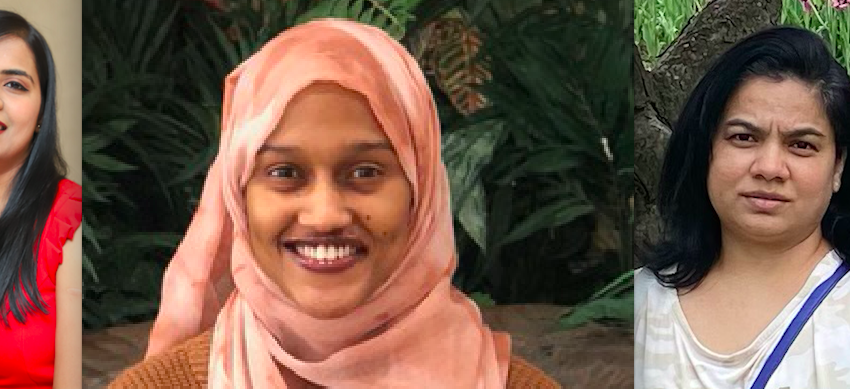The Aviation Accident Analysis Team Flies High with Data Analytics

Each member of the team behind the Aviation Accident Analysis project had unique reasons for joining University of Minnesota Data Visualization and Analytics Boot Camp.
Tejal Kotkar was engineering at tapQA when work visa issues became an obstacle. Savita Hirilall was working at HCL Technologies when she realized the need to better understand the company’s tech. Hibo Dahir didn’t have a technical background — she’d been working as an office manager at Cheetah Transportation, and wanted to make a career change.
Throughout their boot camp experience, the three tackled individual assignments on the complex world of data visualization and analytics. Their final challenge was to develop a project, as a team, which incorporated all they had learned — and they dove in headfirst.
Building a model for aviation analysis
The goal of the project was to employ historical data on aviation-related accidents to predict the amount and severity of aircraft damage, injuries, and fatalities for potential future accidents given chosen conditions. The project also visualized the theoretical damage assessment.

“When we started, we had a data set for all countries in the world on accidents related to postal carriers, the military, air shows, and everything else,” said Tejal. “But when we started working on it, there was just too much data, so we decided to dig down to only accidents from the U.S.”
The model created by the team enabled them to predict if damage was the result of an accident (an occurrence associated with the operation of an aircraft from boarding time to disembarkment) or an incident (an aircraft-related occurrence other than an accident which could or does affect operational safety).

“When we say we are predicting, we’re expecting some inputs at this particular point,” said Tejal. “So, for example, if an event occurs that has either severe or fatal injuries with substantial aircraft damage, even with some uninjured people, we would predict that that event would be categorized as a major accident.”

Sifting through the data wreckage
Hibo explained how the team went about choosing the data utilized in the project. “We would look at different websites and use an API to pull data from [them],” she said. “After we found a good data set, we’d clean it all up to make the data viable for the purposes of our project. That could be really time-consuming.”
Savita added, “What constitutes good data for us is that it needs to contain a certain amount of data points that we can use to really understand the damage situation.”

So, what inspired the topic of aircraft damage? The idea came from Tejal, who explained that the interest runs in the family. “My dad was working for an airline. He was in their engineering department when I was a child,” she said. “He’s retired now, but at the time I remember him talking all about engines and airplanes, so that’s what got me curious.”

Taking flight with plenty of hard work
The team was faced with a tight couple of weeks to leverage their abilities and develop something impressive. All their hard work culminated in an eight-minute presentation at University of Minnesota Boot Camps’ Demo Day: a project showcase for fellow students, instructors, and potential employers.
It went off without a hitch. “The questions we got, they were all interesting and exciting and we were able to answer them all,” Savita fondly recalls. “It worked out really well for us,” added Hibo.
Prepping future students for a smooth landing
Their advice for others looking to get a start in tech, particularly women? Don’t give up.
“Starting out, it can feel overwhelming, like, ‘What have I gotten myself into?’ Just push through. In the end you’ll look back at the accomplishments and end results and see that they’re awesome,” Savita said. Hibo added, “As a person of color, I don’t see a lot of representation for me. And nobody in my family is in tech, so I’m the first. I’m pretty excited for what the future holds.”
Finishing the project and the boot camp would have been more difficult had Hibo, Savita, and Tejal not been comfortable with each other as a team. “This was our fourth project working together,” Tejal explained. “We just took off. I would say I’ve found forever friends through the U of M Boot Camp.”
Ready to get technical with an exciting new skill set? Explore University of Minnesota Boot Camps in coding, data analytics, cybersecurity, UX/UI, fintech, and digital marketing today.

 Live Chat
Live Chat